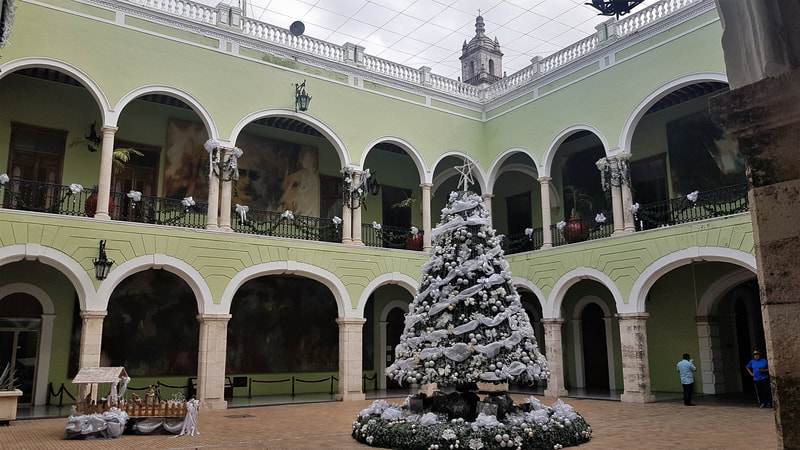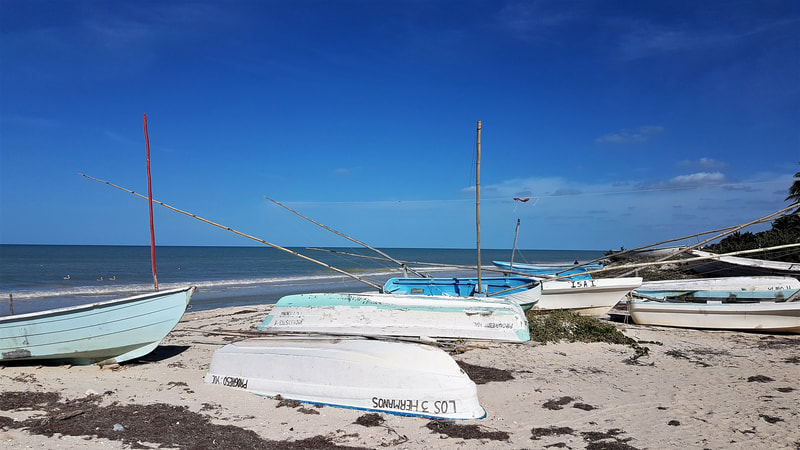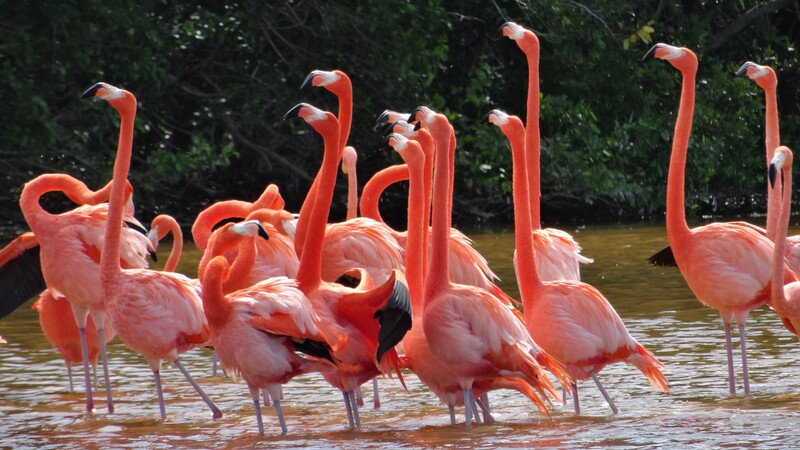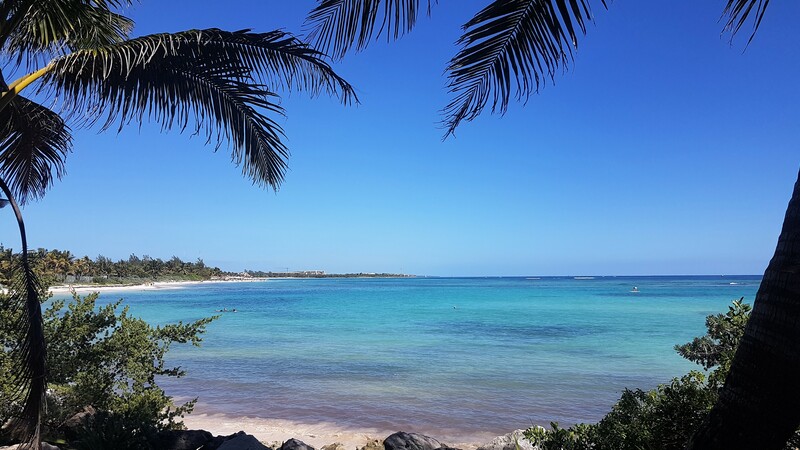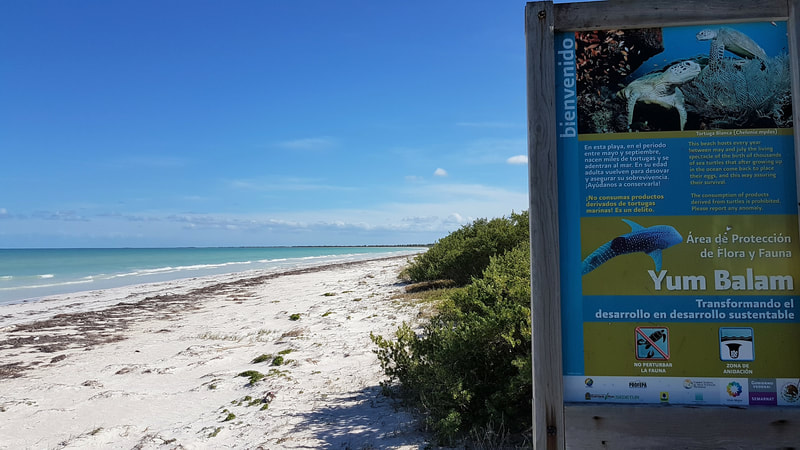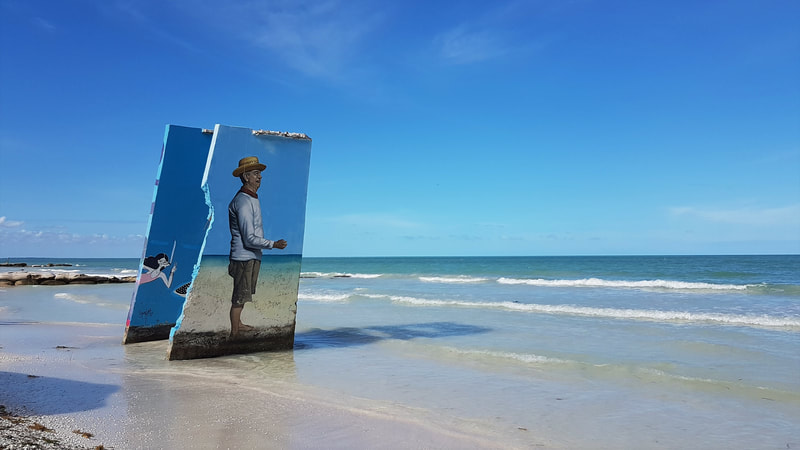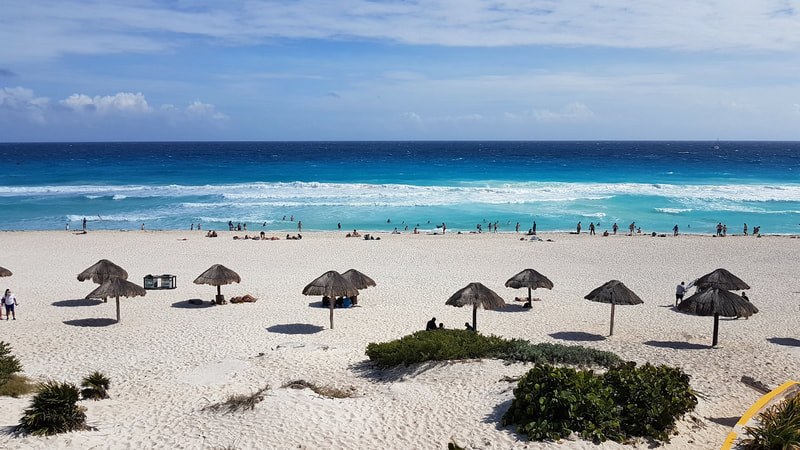|
To avoid tourist peak (prices) at the Caribbean coast during Christmas I booked a week in a hotel in Mérida, the capital of the Yucatan state. This city founded by the Spanishin the 1540s on op of a old Maya city.
The city's ambiance is colonial and there is a tropical climate. In the evenings the people go outdoors and the central mainsquare (Plaza Grande) is full with people. Mérida had a rich cultural life and many free cultural performances are held every day of the week. (Except for Christmas Eve when everything is closed and the people spend their time in the churches and with family at home.) From Mérida I took day trips to the archealogical site of Uxmal, the flamingo reserve of Celestún and the beach of Progreso on the Gulf of Mexico.
0 Comments
The beach escape for Méridanos (people from Mérida) is Progreso, 33km north of Mérida. Puerto Progreso is also an embarkment point for cruise-ships. I was lucky to visit Progreso on a day that there were no cruise-ships. This gave me the good opportunity to relax on the white sand beach. Since Progreso is on the Gulf of Mexico, the sea isn't as clear as on the Caribbean coast. However it was still refreshing!
In the north-west corner of the state Yucatan on the Gulf of Mexico lies the fishing village of Celestún. This village is known for its Reserva de la Biosfera Celestún, that is home to a large flamingo colony.
I took a beach-and-bird day trip from Mérida to Celestún. During a one-hour boat trip we saw the flamingos in their natural habitat. After that we went to the beach for a seafood lunch and some hours of beachtime. When visiting the Yucatan peninsula, it is almost a must to visit one of the ancient Maya cities. The impressive set of ruins of Uxmal are found 80 kilometres south from Mérida.
The archealogical site is in good condition and the presence of Chac (the raingod) can be found on most of its structures. The largest structure is the Casa del Adivino (Magician's House), an oval temple. Other sights are Cuadrangulo de las Monjas (Nuns'Quadrangle), Juego de Plota (Ball Court), Palacio del Gobernador (Governor's Palace) and the Gran Piramide (Great Pyramid). The Great Pyramid can be climbed upon to have an amazing view on the Uxmal sight. Disappointed by the beach in Playa del Carmen, I decided to visit some nearby beaches between PDC and Tulum. I visited the beach of Akumal, known for snorkeling with turtles. This beach seemed to have become a crowded tourist beach with an entrance fee and a lot of organised snorkeling.
The next day I decided to take the collectivo to Xpu Ha, looking for a more pristine beach. Although the access roads to the beach still asked for a (50 pesos) entrance fee, I was happy to spend the day in the bay of Xpu Ha. In the centre of the bay there are some beach clubs and a few shops. To the sides of the bay there are a few luxury resorts and the remains of some resorts that had been destroyed by hurricanes in 2005. I walked the bay to both sides and enjoyed reading a book in the sun on the more remote parts of the beach. It had been six years since I visited Playa del Carmen for the first time. I remembered this resort town as a place with amazing white sand beaches and still a relaxt touristy vibe.
After being at the low-key Isla Holbox for a few days, I was a bit shocked by what I saw when I arrived in Playa del Carmen. The main tourist street "Quinta Avenida" was now even more filled with big tourist shops and big nightlife clubs. The beach was way smaller due to erosion. The wharf with ferries to Cozumel had gotten a large terminal with adjecent shopping mall. And the centre of Playa del Carmen was just packed with tourist (ok, I know it was high season...). Somehow I thought Playa del Carmen has become worse then Cancún regarding it being To find good stretches of white sand beach I had to walk 2 kilometres to the beach of Playacar that is backed up by luxury resorts. The rest of my days in PDC I took advantage of the central location on the Riviera Maya to visit the beaches of Akumal and Xpu Ha (located between PDC and Tulum). Holbox is an island located on the north coast of the Yucatan Peninsula where the Gulf of Mexico meets the Caribbean. The island is accessed by ferry from Chiquila and has virtually no cars. Most transport on the island is by golf cart or by moped. Since there are no paved streets the island is perfect to walk around barefooted. Like the welcoming card in my appartment said: "No shoes, no problem!".
Although Chiquila is just three hours by bus from Cancún, mass tourism hasn't arrived yet on Isla Holbox. The village Holbox is a great destination for street art. Most houses are painted in bright colours and amazing murals can be found. From the village you can walk on stretches of sandbar to the north-western tip of the island called Punta Mosquitos. It took me a few hours (and a few hours to get back) to reach. But the walk was amazing and felt like being Jesus walking on water with the blue sea on both sides of the sandbar. The other day I walked to the most western tip of the island, called Punta Coco. This time I had to cross a Laguna to reach the empty and isolated beaches. After 4 nights I regretted that I didn't book more nights on Holbox. Because when the sun is out, the island really feels like paradise! Cancún was a tourist project started in 1970 by the Mexican federal government in an inhabited, pristine area. Since then the city has grown to become one of the best-known beach resort destinations in the world. The Cancún hotel zone (all-inclusive resorts) is built on 21 kilometers of pristine white beaches shaped like a number "7". Downtown Cancún is where most residents live.
Six years ago I went directly from the international Cancún airport to Playa del Carmen. This time I wanted to see what the fuzz about Cancún was really about. Since accomodation in downtown Cancún is more reasonably priced, I booked a room in a hostel close to the ADO bus station. For lunch and diner, the Parque de las Palapas had numerous typical Mexican eateries. And in the evenings the park was filled with locals strolling around. The downtown area has no beach access. But local busses leave every five minutes to the beaches. One day I spend on the Playa del Delfines, the beach with the "Cancún sign" that is not backed up by massive hotels. It is a beautiful white-sand beach. But the sea is rough. The other day I went to Playa Gaviota Azul and Playa Chac-Mool, both located near Punta Cancún where the famous nightlife of the city is. |
Places in Mexico
All
Mexico Archives
December 2023
|






